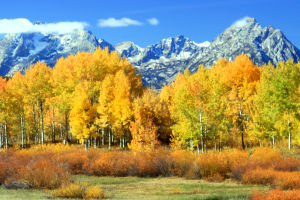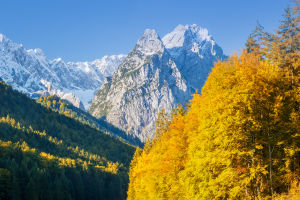Hello, Lykkers!Step into a world where the earth is painted in vibrant gold, stretching as far as the eye can see.
Rapeseed fields, with their bright yellow blooms, create some of the most stunning landscapes, especially during the spring.
These fields, often found across Europe and parts of Asia, not only offer breathtaking views but also play a significant role in agriculture. So, what makes these golden fields so special?
A Sea of Gold: The Beauty of Rapeseed Fields
Rapeseed, also known as canola, transforms the countryside into a sea of gold each spring. The sight of endless fields covered in brilliant yellow flowers is a feast for the eyes, attracting photographers, nature lovers, and anyone looking to experience the beauty of the season. The contrast of the golden flowers against the blue sky is nothing short of magical, making rapeseed fields a popular destination for springtime outings.
The flowers themselves are small and delicate, but when grouped together, they create a powerful visual impact. The gentle sway of the blooms in the breeze, combined with the sweet fragrance that fills the air, makes walking through a rapeseed field an almost otherworldly experience.
The Role of Rapeseed in Agriculture
Beyond their beauty, rapeseed fields are vital to agriculture. Rapeseed is grown primarily for its oil-rich seeds, which are used to produce canola oil—a staple in kitchens around the world. This oil is prized for its light flavor and health benefits, being low in saturated fat and high in omega-3 fatty acids.
In addition to oil production, rapeseed plants are also used as a source of animal feed and as a cover crop to improve soil health. Their deep roots help prevent soil erosion, and after the harvest, the plant residues can be plowed back into the soil to add organic matter. This makes rapeseed a versatile and valuable crop in sustainable farming practices.
The Best Places to Experience Rapeseed Fields
Rapeseed fields can be found in many parts of the world, but some regions are particularly famous for their golden landscapes. In the UK, the rolling hills of the Cotswolds and the countryside of Yorkshire come alive with rapeseed fields in the spring. The French region of Normandy is another popular destination, where fields of yellow stretch out beneath historic châteaux and quaint villages.
For those seeking a truly iconic view, the rapeseed fields of Luoping, China, are a must-see. Each spring, the hillsides of Luoping are transformed into a golden ocean, with terraces of rapeseed creating a stunning patchwork across the landscape. These fields are a photographer’s dream, offering countless opportunities to capture the beauty of nature in full bloom.
Capturing the Perfect Moment: Tips for Visiting Rapeseed Fields
When planning a visit to rapeseed fields, timing is everything. The flowers typically bloom from late April to early June, depending on the region. Early morning or late afternoon is the best time to visit, as the soft light of sunrise or sunset enhances the golden hue of the flowers and creates the most beautiful photos.
While walking through the fields, it’s important to stick to the paths to avoid damaging the plants. Many farmers are happy to welcome visitors, but it’s always a good idea to ask for permission before entering private fields. And don't forget to take in the moment—the sight, the scent, and the serenity of the golden fields are best appreciated when fully immersed in the experience.
A Golden Farewell
Rapeseed fields are not only a feast for the eyes but also a connection to the rhythms of nature and the bounty of the earth. These golden fields, in all their glory, remind us of the simple, yet profound beauty that surrounds us. They serve as a gentle nudge to pause and appreciate the world’s natural wonders.
So, Lykkers, as you journey through landscapes dotted with these brilliant yellow fields, take a moment to reflect on the richness they bring to both the land and our lives. The golden season of rapeseed is fleeting, but its beauty leaves a lasting impression.


